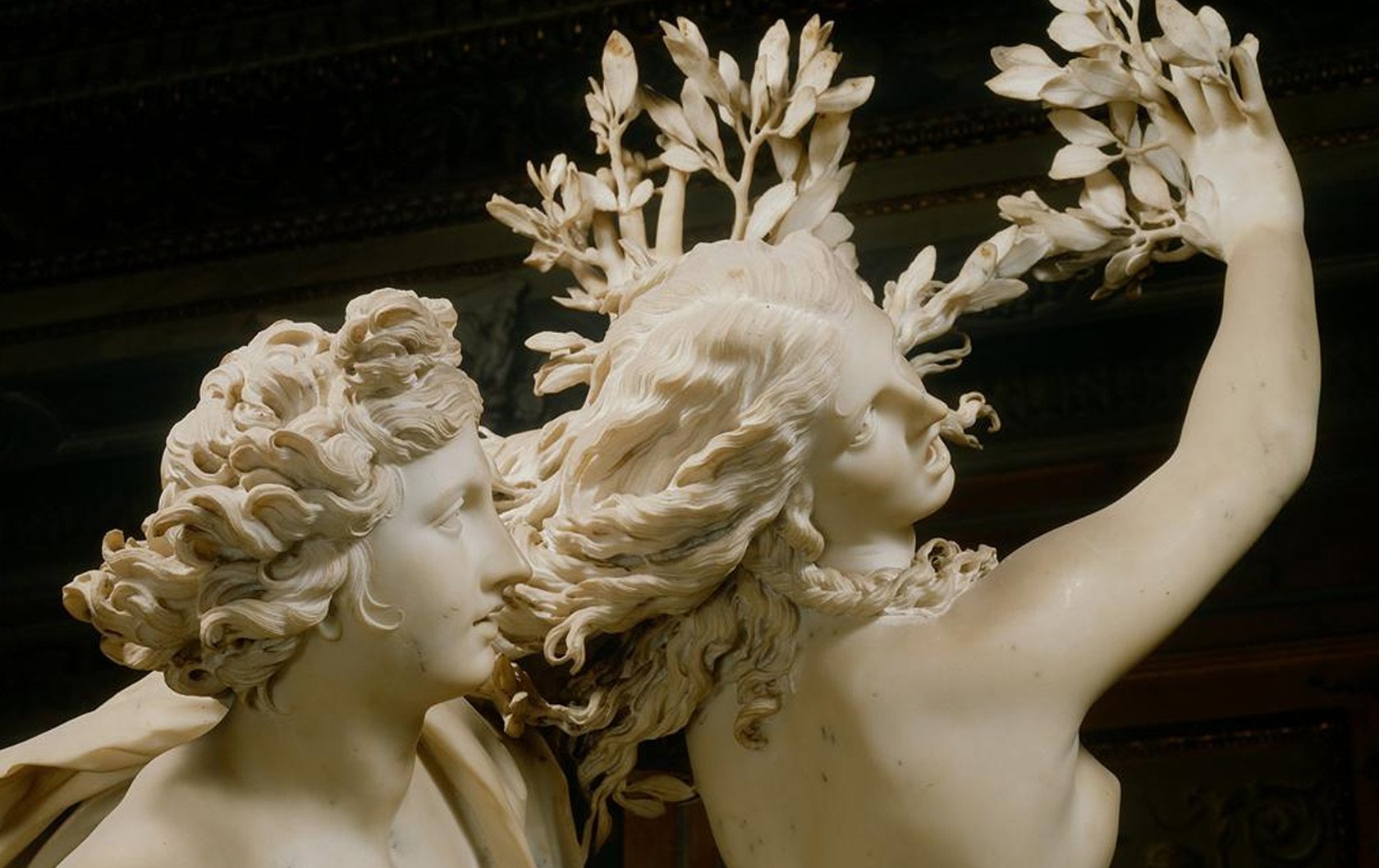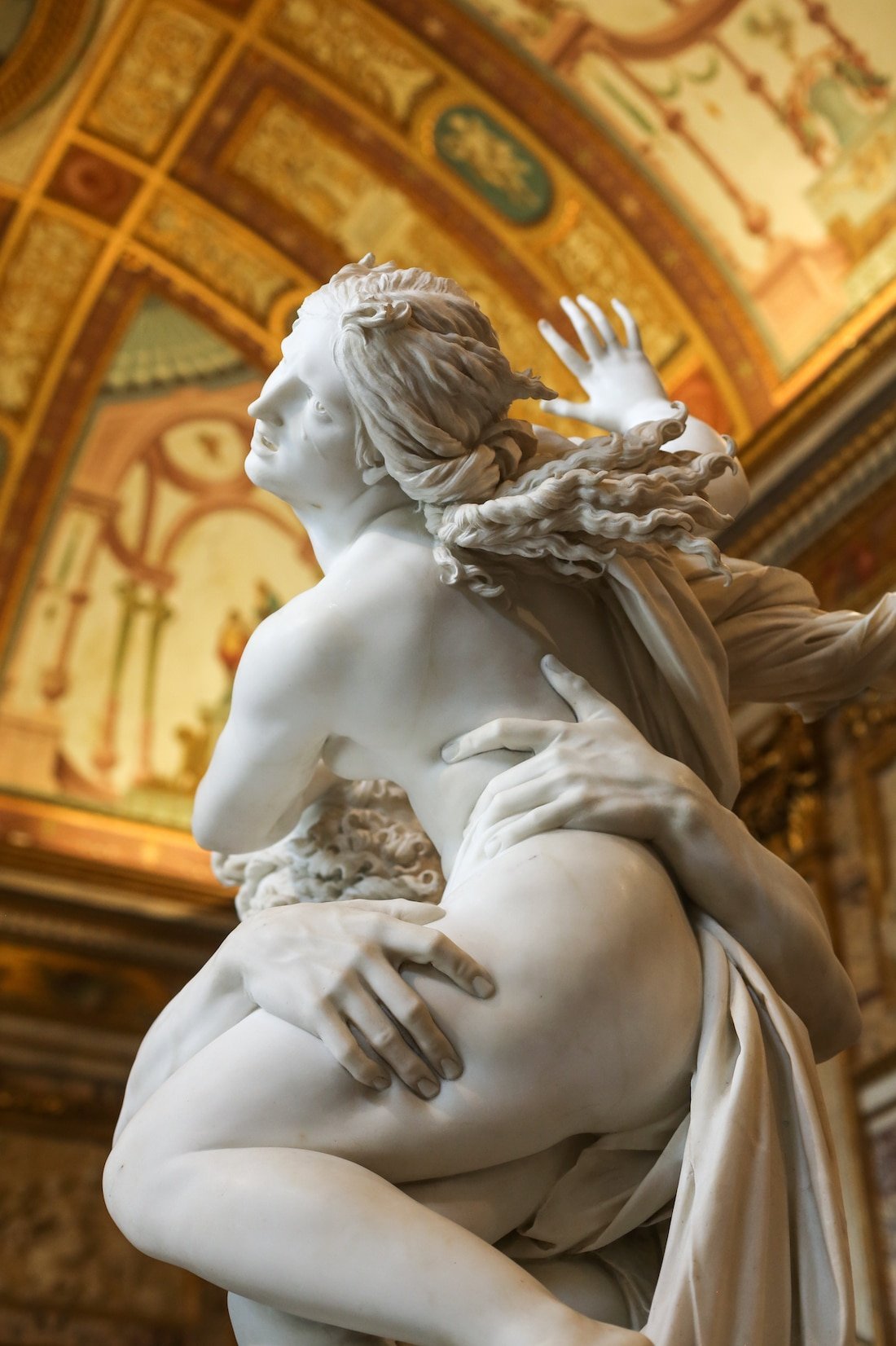Introduction
In the heart of Rome, nestled within the Galleria Borghese, stands a breathtaking marble sculpture that has captivated art enthusiasts for centuries. Created by the legendary Italian artist Gian Lorenzo Bernini in 1622, when he was just 23 years old, the “Apollo and Daphne” is a testament to the sheer brilliance and technical mastery of this Baroque genius.

This exquisite work of art tells the story of the Greek god Apollo’s pursuit of the nymph Daphne, and the dramatic transformation that occurs as she seeks to escape his advances. Bernini’s masterful sculpting brings this mythological tale to life, capturing the moment of Daphne’s metamorphosis with such vivid detail and emotion that it leaves a lasting impression on all who behold it.

In this blog post, we will delve into the captivating history and artistic brilliance of Bernini’s “Apollo and Daphne,” exploring the intricacies of its creation, the significance of the mythological narrative, and the enduring legacy of this extraordinary sculpture.
The Mythological Inspiration
The story of “Apollo and Daphne” is rooted in Greek mythology, specifically the tale recounted in Ovid’s “Metamorphoses.” In this classic work, the sun god Apollo, infatuated by the beautiful nymph Daphne, pursues her relentlessly. Daphne, however, is determined to remain chaste and rejects Apollo’s advances.
As Apollo closes in on Daphne, she pleads with her father, the river god Peneus, to help her escape. In response, Peneus transforms Daphne into a laurel tree, saving her from Apollo’s grasp. The sculpture captures the very moment of this dramatic transformation, with Daphne’s delicate limbs and features beginning to morph into the leaves and branches of the laurel tree.

Bernini’s masterful interpretation of this mythological tale not only showcases his technical prowess but also his ability to imbue the sculpture with a palpable sense of emotion and movement. The viewer is drawn into the narrative, captivated by the physical and psychological tension between the pursuing Apollo and the fleeing Daphne.
Bernini’s Artistic Genius
Gian Lorenzo Bernini was a true Renaissance man, excelling in various artistic disciplines, including sculpture, architecture, and painting. Born in 1598 in Naples, Bernini’s talent and creativity were evident from a young age, and he quickly established himself as a leading figure in the Baroque art movement.
The “Apollo and Daphne” sculpture is a prime example of Bernini’s mastery of the medium of marble. He possessed an unparalleled ability to transform the cold, rigid material into a fluid, dynamic representation of the human form. The way he captures the moment of Daphne’s transformation is a testament to his technical virtuosity and his deep understanding of the human anatomy.

One of the most striking features of the sculpture is the sense of movement and tension it evokes. Bernini masterfully depicts Daphne’s desperate attempt to escape Apollo’s grasp, with her body twisting and contorting as the transformation takes place. The delicate details of her fingers and toes, which are beginning to morph into the laurel tree’s leaves and branches, are truly breathtaking.
Equally impressive is Bernini’s portrayal of Apollo’s pursuit. The god’s muscular, athletic form is captured in mid-stride, his outstretched hand reaching towards Daphne with a sense of urgency and desire. The contrast between the two figures, one fleeing and the other pursuing, creates a dynamic and captivating visual narrative.
Bernini’s technical prowess is further evident in the intricate details of the sculpture. The delicate folds of Daphne’s garment, the intricate veining of the leaves, and the lifelike rendering of the human anatomy all demonstrate his exceptional skill as a sculptor. The way he has managed to capture the moment of transformation, with the transition from flesh to foliage, is a true testament to his artistic genius.
The Significance of the Sculpture
The “Apollo and Daphne” sculpture holds immense significance not only in the context of Bernini’s artistic career but also in the broader history of Baroque art. This work, commissioned by Cardinal Scipione Borghese in 1622, marked a pivotal moment in Bernini’s rise to fame and cemented his reputation as one of the most talented sculptors of his time.
The sculpture’s placement within the Galleria Borghese, a magnificent villa and art collection in Rome, further underscores its importance. The Borghese family, one of the most influential patrons of the arts during the Baroque era, recognized the exceptional talent and potential of the young Bernini, and their commission of this work was a testament to their faith in his abilities.

Beyond its historical significance, the “Apollo and Daphne” sculpture also holds deep symbolic and thematic significance. The mythological narrative it portrays, with the themes of pursuit, transformation, and the power of nature, resonates with viewers on a profound level. The sculpture’s ability to evoke a range of emotions, from the drama and tension of the chase to the beauty and grace of Daphne’s metamorphosis, is a testament to Bernini’s mastery of the sculptural medium.
Moreover, the “Apollo and Daphne” is considered a masterpiece of the Baroque style, which was characterized by a focus on drama, emotion, and the theatrical presentation of religious and mythological themes. Bernini’s use of dynamic, swirling forms and his ability to capture the human figure in a state of movement and transformation perfectly encapsulate the Baroque aesthetic.
The Enduring Legacy of Bernini’s Masterpiece
Gian Lorenzo Bernini’s “Apollo and Daphne” has endured as one of the most celebrated and admired works of art in the Western canon. Its influence can be seen in the works of countless artists and sculptors who have been inspired by Bernini’s technical virtuosity and his ability to breathe life into marble.
The sculpture’s enduring popularity is a testament to its timeless appeal. Visitors to the Galleria Borghese in Rome continue to be captivated by the sheer beauty and emotional power of the “Apollo and Daphne,” marveling at Bernini’s ability to capture the drama and tension of the mythological narrative.

Beyond its impact on the art world, the “Apollo and Daphne” has also left a lasting mark on popular culture. The sculpture has been the subject of numerous scholarly analyses, documentaries, and even references in literature and film. Its iconic status has made it a recognizable symbol of Baroque art and a testament to the enduring power of the human imagination.
As we reflect on the legacy of Bernini’s masterpiece, it becomes clear that the “Apollo and Daphne” is not just a remarkable work of art, but a timeless testament to the boundless creativity and technical mastery of one of the most celebrated artists in history. Its enduring appeal and the profound emotional response it continues to evoke in viewers are a testament to the enduring power of art to captivate, inspire, and transform.
Conclusion
In the heart of Rome, the Galleria Borghese stands as a testament to the enduring legacy of Gian Lorenzo Bernini and his extraordinary sculpture, “Apollo and Daphne.” Created when the artist was just 23 years old, this breathtaking work of art captures the drama and emotion of the Greek mythological tale with unparalleled skill and artistry.
Bernini’s mastery of the medium of marble, his ability to imbue the sculpture with a sense of movement and tension, and his deep understanding of the human form have all contributed to the lasting appeal of this masterpiece. The “Apollo and Daphne” not only stands as a testament to Bernini’s genius but also reflects the broader themes and aesthetic of the Baroque art movement.
As visitors from around the world continue to be captivated by the beauty and power of this sculpture, it is clear that Bernini’s “Apollo and Daphne” will continue to inspire and awe for generations to come. This enduring legacy is a testament to the timeless power of art to capture the human experience and to transcend the boundaries of time and space.
